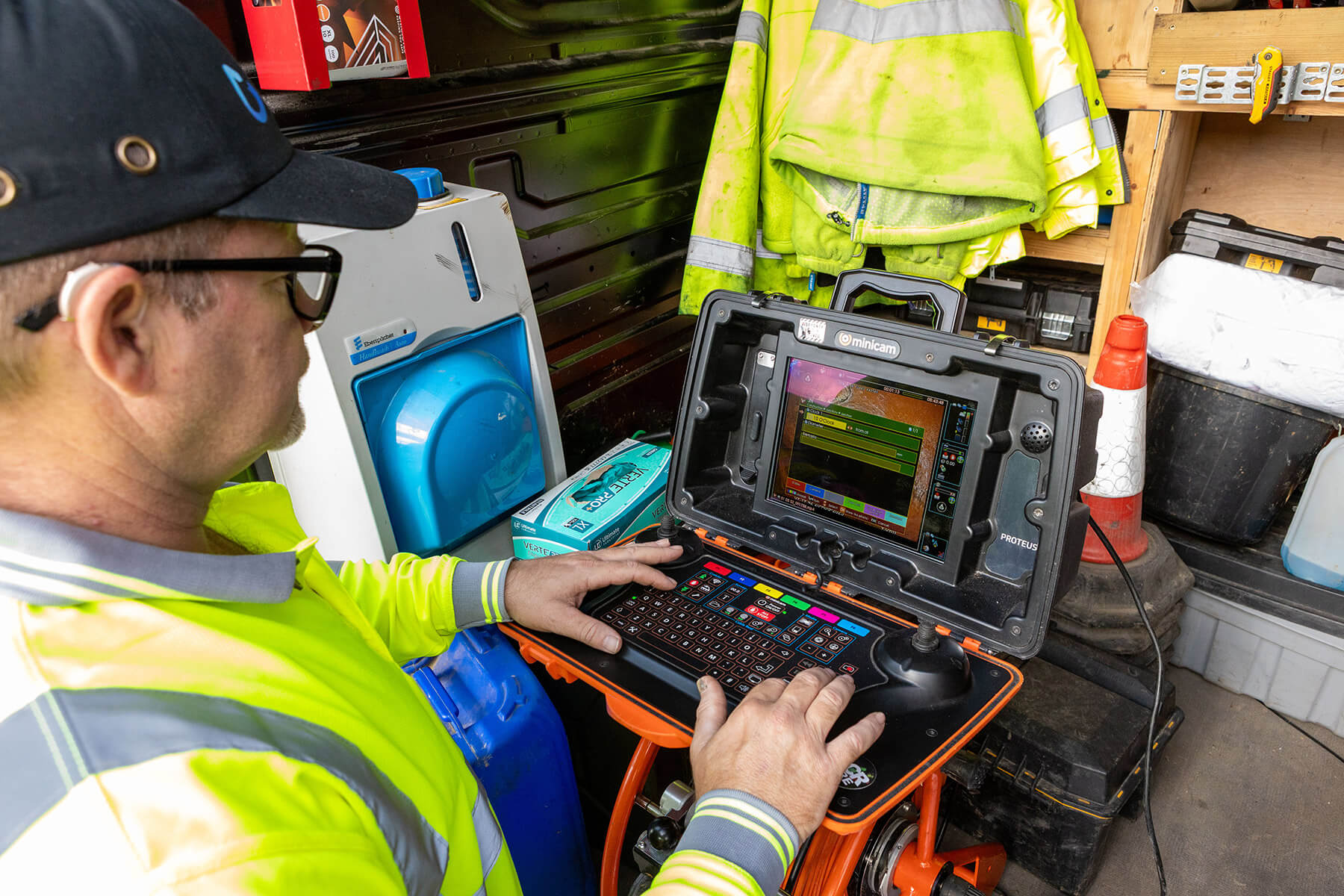CCTV drainage surveys – what are they and why do businesses need them?
When something goes wrong underground, it rarely stays small. CCTV drainage surveys give you full visibility of your hidden assets so you can spot issues early, plan maintenance with confidence and keep your site safe and compliant. Using advanced crawler and push-rod cameras, engineers capture high-resolution footage inside pipes, culverts and chambers without excavation or man entry, then deliver coded, standardised reports you can act on. Read on to find out more why they’re so important.

How a CCTV drainage survey works.
Specialist cameras are inserted into your drainage network to record continuous video and stills. Trained operatives log every observation (roots, cracks, displaced joints, fat build-up, misconnections and more) using the UK water industry standard coding – WRc’s Manual of Sewer Condition Classification (MSCC5) and BS EN 13508-2 – so findings are consistent, auditable and comparable over time. You’ll receive a clear report, defect schedule and recommended remedial actions.
Why businesses need CCTV drainage surveys.
1. Detect blockages, leaks and damage early.
Minor defects become major disruptions: flooding, pollution incidents, slab heave, even production downtime. Routine CCTV drainage surveys identify problems at the “hairline crack and early root ingress” stage so you can fix them before they escalate – saving money and protecting operations. Because the method is non-invasive, there’s no needless digging or damage to finished surfaces while you investigate.
2. Create accurate, site-wide drainage maps.
Many estates have incomplete or outdated drainage drawings, especially after site changes. CCTV and connectivity surveys confirm pipe routes, depths, links and outfalls, producing reliable as-built plans that underpin asset management, capacity checks and future works. Accurate mapping also helps you avoid building over defects and prevents costly delays during construction phases.
3. Strengthen environmental compliance and emergency planning.
Knowing your network is key to staying on the right side of the law. CCTV surveys support Pollution Prevention Guidance (for example, selecting and maintaining oil separators on surface-water systems) and provide evidence that drainage is fit for purpose. In an incident, an up-to-date plan with known isolation points and outfalls dramatically speeds up response and containment, reducing environmental harm and clean-up costs.
4. Improve site safety by reducing confined-space entry.
Enclosed drains and sewers are confined spaces with serious hazards: toxic gases, oxygen deficiency, fire risk and drowning. HSE guidance is clear – avoid entry where possible. CCTV inspections achieve the visibility you need while keeping people out of harm’s way, and when man-entry is unavoidable they inform safer, better-planned work.
What a quality CCTV drainage survey report includes.
- Defect grading to MSCC5/EN 13508-2: standard codes and condition scores that support objective decision-making and budget prioritisation.
- High-resolution imagery: annotated stills and video clips of each observation.
- Drainage connectivity plan: updated drawings showing routes, invert levels, manholes and outfalls.
- Recommendations and next steps: targeted cleaning such as descaling and root cutting, point repairs, lining or full replacement – ranked by urgency and risk.
Using the MSCC coding system ensures your CCTV drainage survey is consistent with water-industry practice and comparable with future inspections.
When to commission a CCTV drainage survey.
- Routine asset management: schedule periodic inspections to catch deterioration early and extend asset life.
- Pre-acquisition and dilapidations: verify drainage condition before you buy, lease or hand back a site.
- Pre-/post-build checks: confirm capacity and connections before construction, validate repairs or new installations after works.
- Pollution prevention and SuDS integration: ensure separators, interceptors and outfalls are operating correctly within your surface-water strategy.
Bottom line: CCTV drainage surveys turn your underground network from a blind spot into a managed asset. With standardised reporting, accurate mapping and safer, non-invasive inspections, you’ll improve compliance, plan smarter maintenance and prevent small defects becoming big bills – keeping your operations efficient and protected.
Why partner with a specialist?
The value of a CCTV drainage survey lies in the quality of the data and how actionable the insights are. Choose a provider that:
- works to MSCC5 / BS EN 13508-2 with WRc-approved reporting software;
- offers GIS-ready mapping and CAD deliverables for your asset register;
- has confined-space trained teams and robust safety systems;
- provides remediation capability so issues are fixed swiftly.
Looking to protect your site and stay compliant? Talk to the experts. Get in touch with RSM today to book your CCTV drainage survey and keep your operations running smoothly.vv